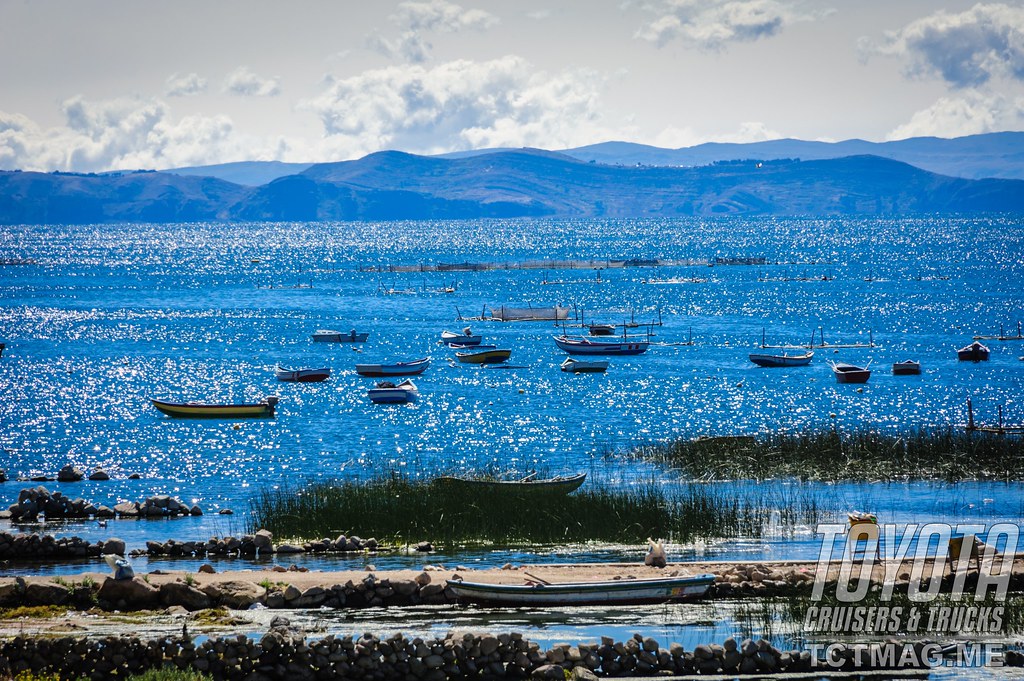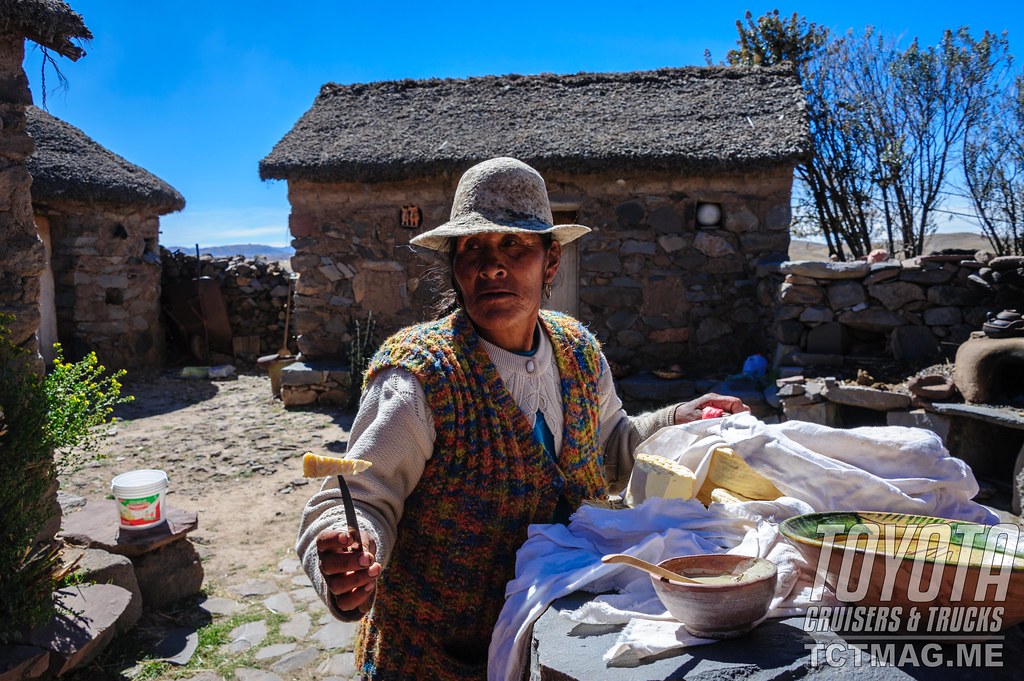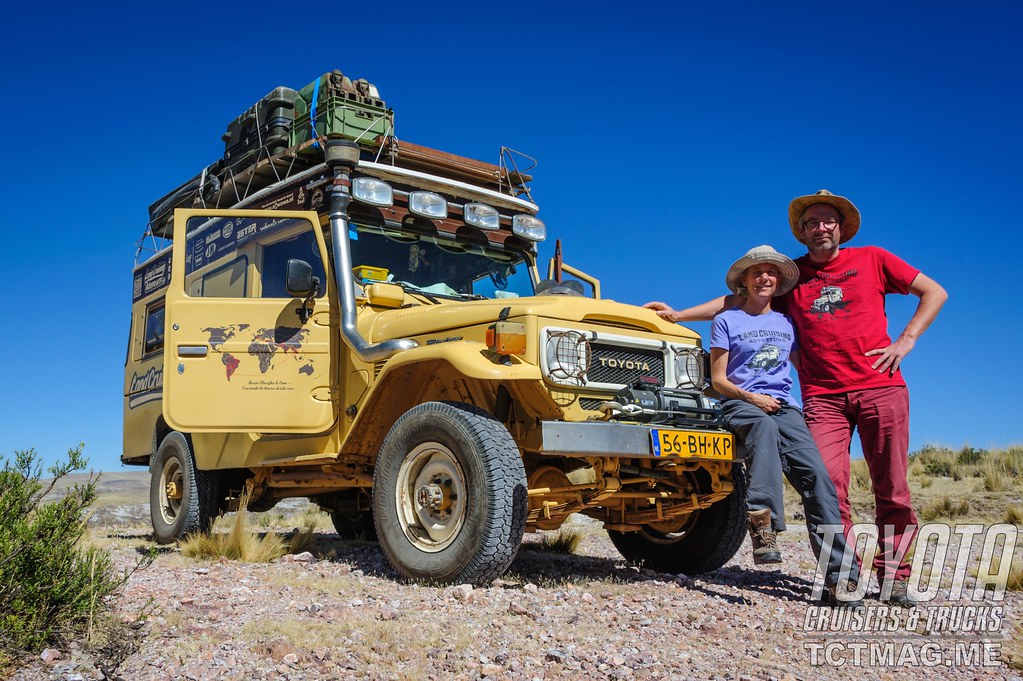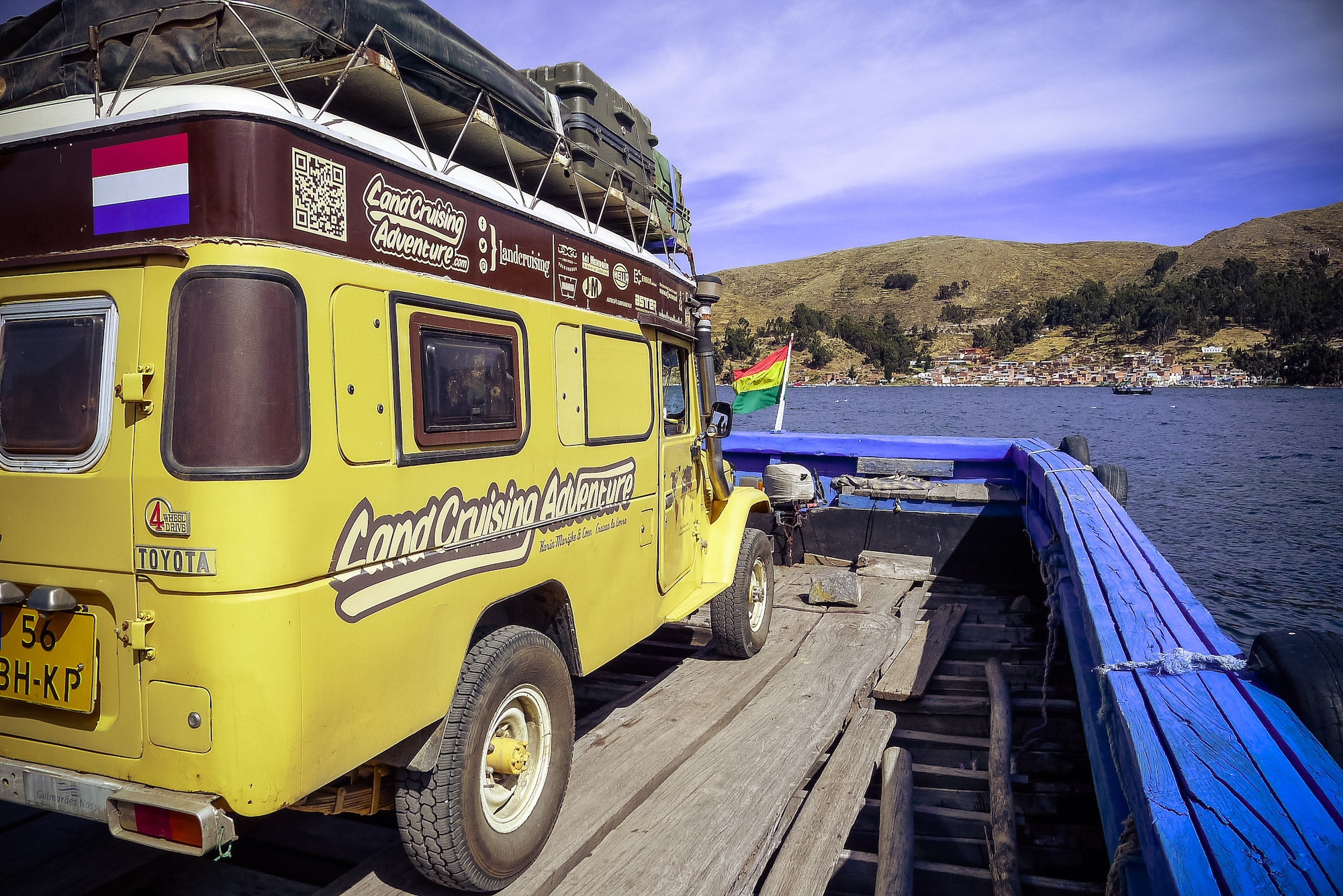Surrounded by white-topped mountains, the landscape offered a magnificent picture of cobalt-blue water with the sun glistening and the wind sending ripples over the surface.

Located between Bolivia and Peru, high up at 12,507 feet, Lake Titicaca is the birthplace of the sun, at least according to Andean belief. It is also the birthplace of the Incas. On the Bolivian side, the ruins of the Inca era on the islands of Lake Titticaca are highlights for visitors. On the Peruvian side of Lake Titicaca live the Uros people – not on the shore but on islands which they build from reeds. The history, culture, and landscape of Lake Titicaca never ceases to amaze me.

Puno is the main city on Lake Titicaca, and for most tourists the starting point for a visit to the Uros people. However, we decided to steer around the town after we had learned about another place to visit Uros people, but without the crowds. Llachón is a village too small to be mentioned on our maps but I knew it was situated on the Peninsula of Capachica. I got up from my nice little nap behind the wall, returned to the Land Cruiser, and Coen started the engine. Asphalt changed into a potholed dirt road where we could drive only at a snail's pace, which was fine as we were in no hurry. The scenic drive followed the northwestern side of Lake Titicaca that was full of reeds and cut through agricultural fields. Despite electricity cables and the occasional satellite disk, it felt a bit like a time-warp back into time, into an agricultural world that appeared scenic from the outside but that must be tough and harsh in daily life.


Quechua-speaking locals were harvesting or preparing the soil before twilight set in. Others were homebound, tending their sheep while some carried their babies tucked warmly and comfortably in a woven blanket on their back. Dressed in local garb, the women wore long, multi-layered skirts and embroidered vests or sweaters. But it was their hats that stood out – they have the shape of a kite, with two cotton balls on top. Flocks of sheep scampered across the streets, unpredictable in their movements as always. Sheep may start crossing a road, halfway decide not to cross and turn around. They may freeze, run or alternate between the two extremes within seconds. With sheep near the road, you always have to watch out.

Besides the main dirt road that cut down to almost the far end of the peninsula, there were no roads, just paths leading up to adobe houses with slate, zinc or thatched roofs. The inhabitants lived spread out on the peninsula with a small group living together in the village of Llachón. On arrival, Coen approached a man on the street, shaking his hand to introduce himself and asking whether it was okay if we camped in the corner of the plaza. Thus, we met Primo, the Spanish-speaking owner of the small hospedaje in the plaza. The amiable fellow was born on one of the islands in Lake Titicaca but had lived here since he got married. He ran a hostel but also organized tours, which was exactly what we needed to visit the Uros Islands. Camping in the plaza was no problem and early in the morning we went for a walk, following a path up the hill just outside Llachón. It was Sunday and the peninsula was asleep. There was nobody about, which was bad planning on our side as agricultural scenes are always nice to take in. The place was scenic, the weather gorgeous, and everything radiated an unhurried feel.

On our return, Primo had a boat ready to take us to an island. According to the story, when the conquistadores, the Spanish colonizers, invaded their territory, the Uros fled and decided to go and live on Lake Titicaca in Peru. In the shallows of the lake grow torora reeds in abundance and the Uros had already been using these to build boats before they learned how to build islands and houses with reeds. Of course the reeds rot away in the water and so maintaining the islands is a continuous process of adding new layers of reed. They have lived like that for centuries.
Going to see local people often has something of a going-to-the-zoo feeling to it, and I generally find that very uncomfortable. Here the deal was simple and clear. Visitors get to see where and how the Uros people live and in return you buy handicrafts. It was an easy-going visit and it helped that we spoke Spanish and could converse with them. They had set up a miniature of their island, which they used to explain how building and maintaining the reed island worked. They provided answers to frequently asked questions with patience and humor. I particularly appreciated their honesty. They no longer use the torora-reed boats – "They are just here for tourists, would you like to sit in one?" – but open wooden boats with an outboard motor. They didn't hide the fact that they no longer cooked on reeds but on gas. Simple things, which gave honesty to the whole affair and prevented it from looking like some sort of mock-up.
After a pleasant afternoon we said our goodbyes, returned to the mainland and headed deeper into the Andes Mountains to another highlight of Peru: Machu Picchu.



To get your copy of the
Spring 2020 Issue:
Follow us on Facebook, Twitter, and Instagram to get up-to-date industry news, events, and of course, amazing adventures, stories, and photos!













